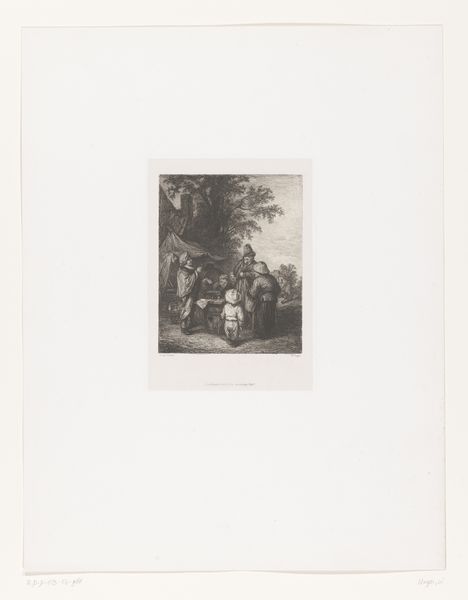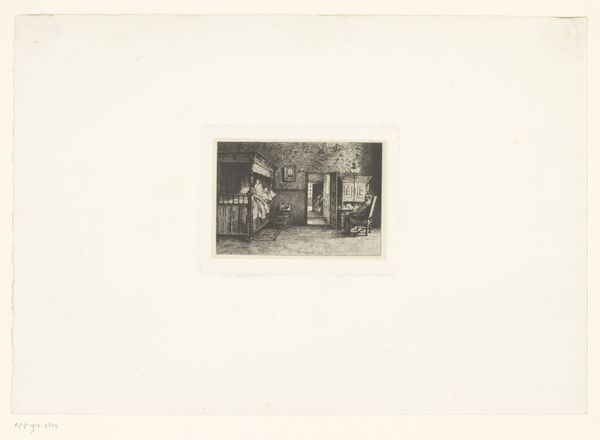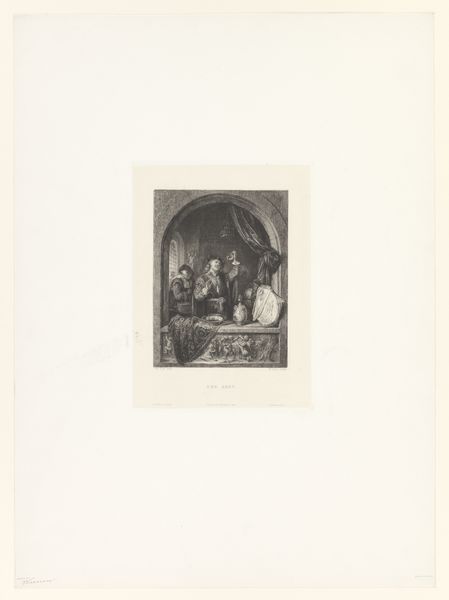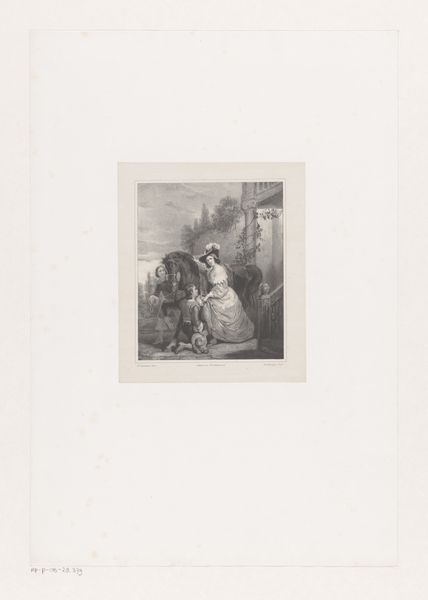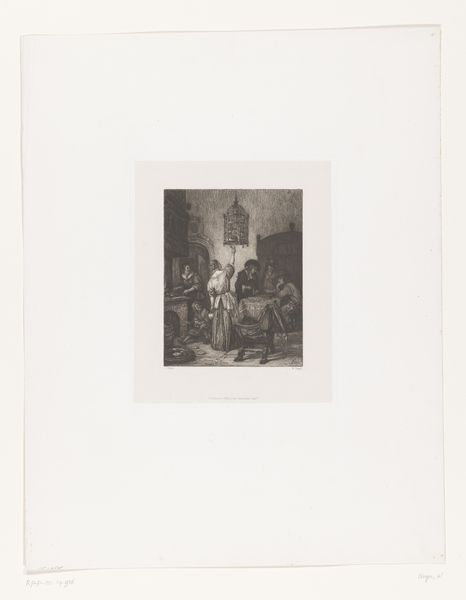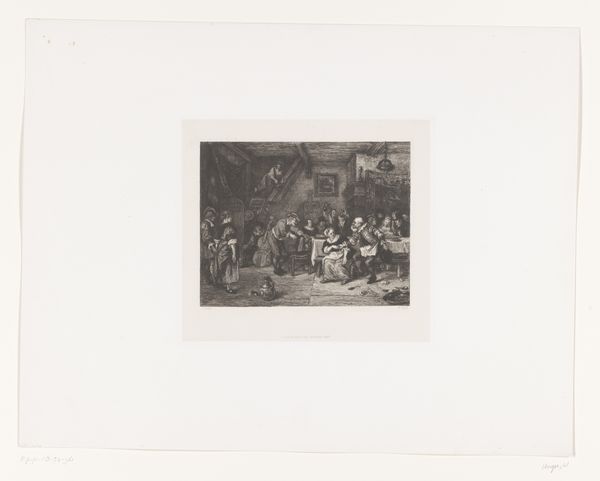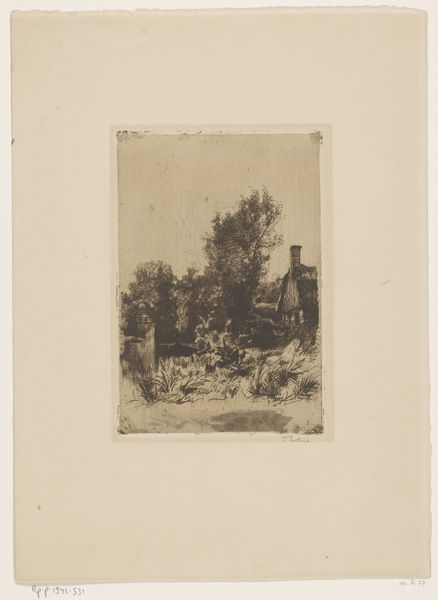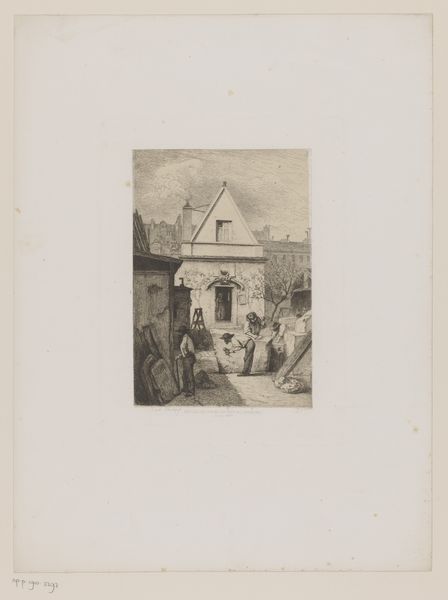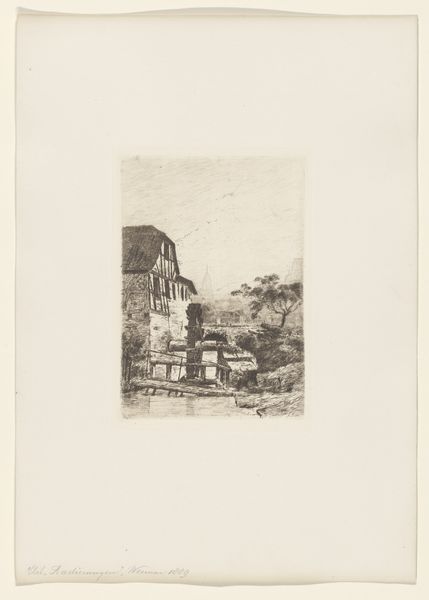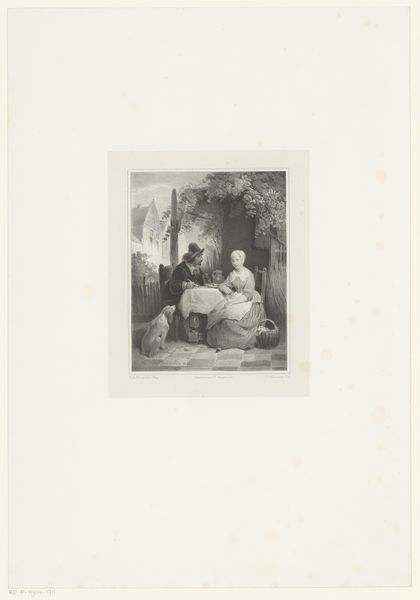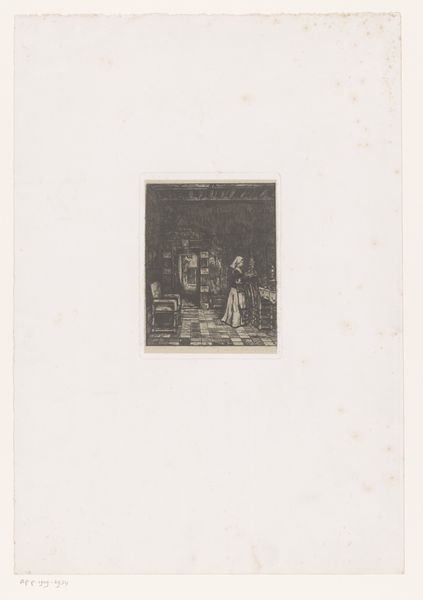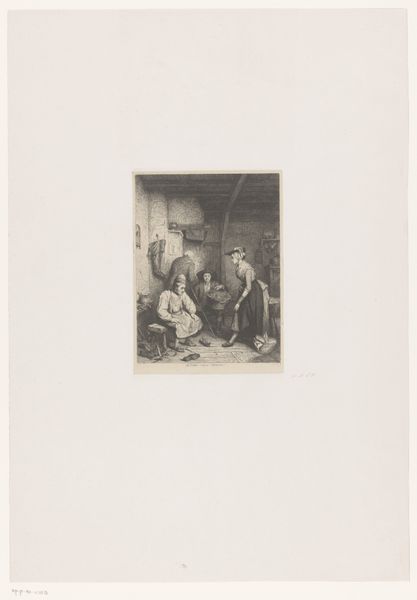
Dimensions: height 245 mm, width 215 mm
Copyright: Rijks Museum: Open Domain
Curator: This print, attributed to William Unger, is titled "Boerenkermis," or "Peasant Fair," dating somewhere between 1847 and 1889. It's an etching in ink on paper, a glimpse into 19th-century life now held at the Rijksmuseum. What’s your initial reaction? Editor: Overwhelming activity! There's such a flurry of figures depicted, it feels incredibly dense. Like a visual catalogue of archetypes from a rural village—all gathering around what appears to be a central structure. Curator: Exactly. We see Unger engaging with genre painting traditions. Look at how he positions the building – seemingly a local tavern or meeting house – as a site for the construction of social bonds. The interactions taking place here are representative of communal celebration, and how those at the margins of society are integrated into the dominant social order. Editor: It’s the layering of symbols I find particularly intriguing. The children gathered close, a suggestion of innocence, juxtaposed against figures gesturing wildly – hints of heightened emotions, maybe too much drink? Curator: I appreciate that reading. The imagery certainly lends itself to multiple interpretations depending on the viewer’s own lived experiences. Unger presents us not with a sanitized, idealised community, but with a real one – complex and perhaps even contradictory in its behaviors. Note how there seems to be an older woman comforting a child to the right: she could be read as representing stability amid all of the chaotic movements surrounding her. Editor: And how does that link to cultural memory, you think? Are these universal experiences, or do these images of village life reinforce something specifically tied to, say, Dutch identity? Curator: That's precisely where we delve into the work's ongoing relevance. While "Boerenkermis" appears to capture a fleeting moment in 19th-century Netherlands, its exploration of communal identity – particularly class dynamics within celebratory social events – continues to resonate today. We’re forced to ask ourselves who benefits from social bonds, and what kind of behavior they perpetuate? Editor: A point well taken. The symbolic language transcends mere depiction; it invites deeper contemplation about who belongs and on what terms. Curator: Right! The layers of history become less about the specific image, and more about understanding our current frameworks. Editor: Looking again, the nuances within these bustling figures ignite questions about unity and division in modern society. It’s a complex artwork and definitely more layered than initially expected!
Comments
No comments
Be the first to comment and join the conversation on the ultimate creative platform.
